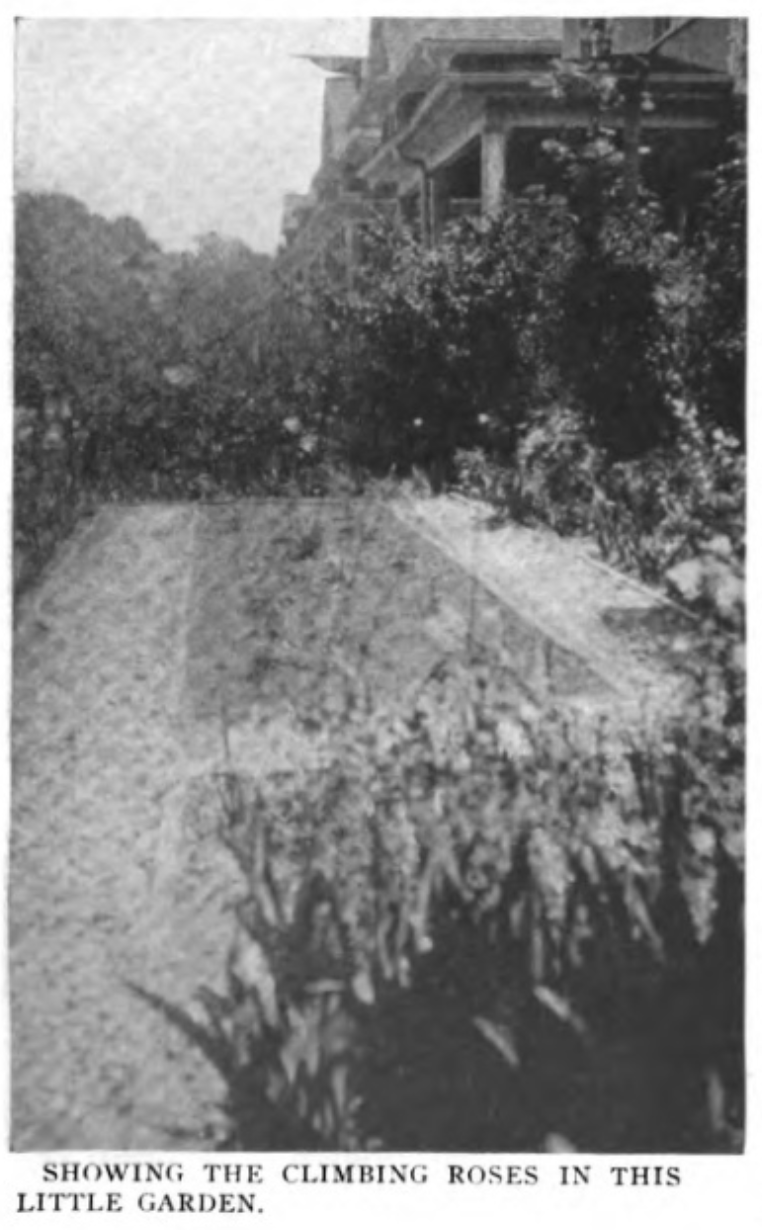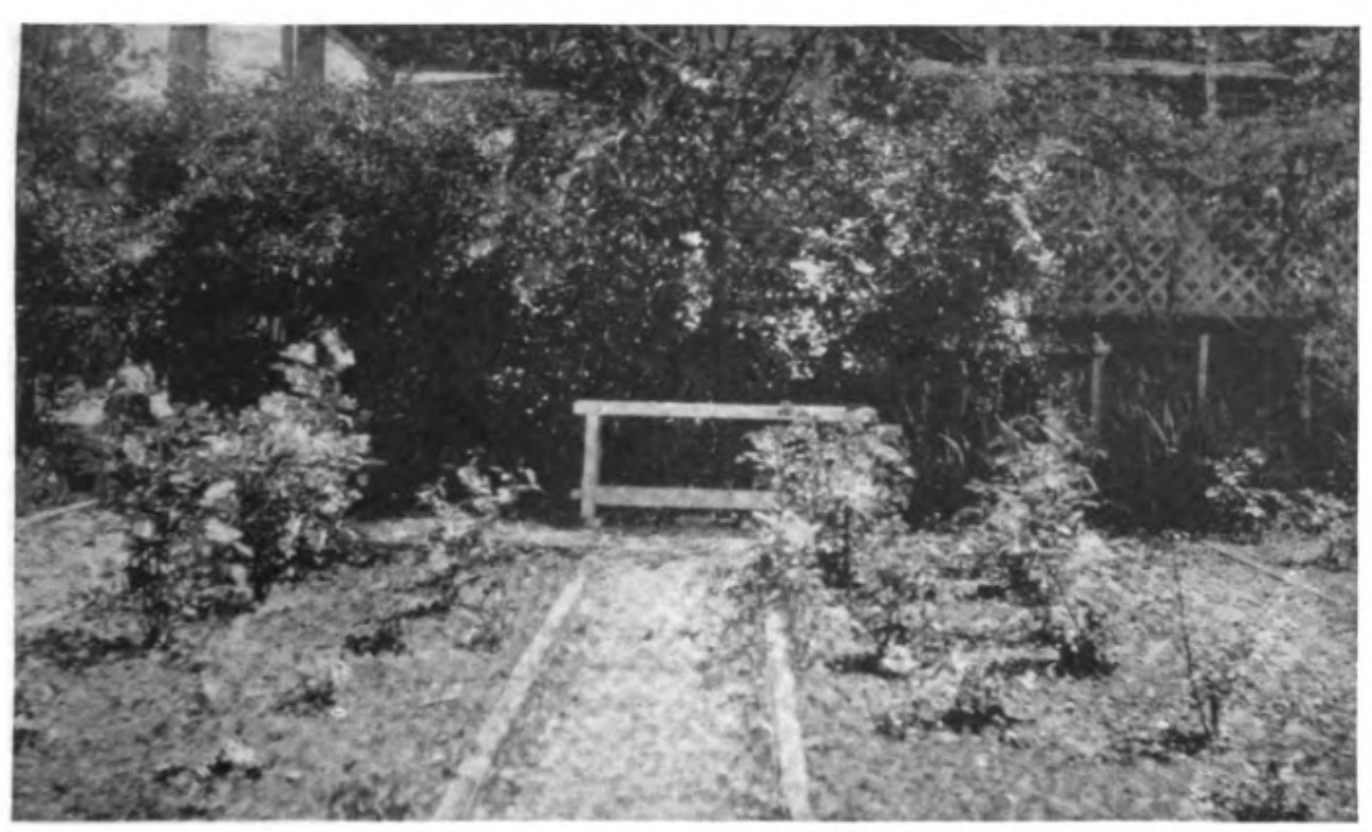|
Roses are not at all hard to grow, they are not exacting as to labor; it is not at all necessary to pay a large amount of money for good stock, and the growing of them is one of the most delightful and interesting pastimes. It is not essential to buy the rarest and therefore the most expensive roses, for many inexpensive ones are exquisite, and with good care a rose will last a lifetime. Fertilizers are expensive if you buy them, but by practicing a little conservation in plant food it becomes a small matter. In my own rose garden in Flushing, Long Island, I have used tea leaves and coffee grounds as fertilizers with great success. When the tea leaves and coffee grounds are cool just scrape them in around the plants are you would any other fertilizer. Another most excellent plant food is a meat bone. Bury all bones near the rose bushes. Spread well-rotted manure over the ground in December before you cover them finally for the winter, and in the spring dig in a full handful of bone-meal around each rose. This is all that is required to give them the enrichment they need beyond that which they get from the soil, sun and the rains. Do not depend upon luck if you wish good roses. You must know how to plant them if you wish the best results. The people who are called lucky are merely those who consciously or unconsciously treat a plant as it wishes to be treated. When they plant roses they dig a hole large enough for the roots to be spread out comfortably. Each year they are pruned carefully and correctly and above all they keep a wary lookout for the aphide. It is useless to deny that the rose bugs must be fought; however, they last but a short time. It may be helpful to rose growers to know what I have grown successfully in my plot of ground near New York. First of all is Mrs. Laing, a staying but gracious flower, delightful to look upon and extremely fragrant. Although a hybrid perpetual, it blooms all summer and it is she who inevitably contributes the last rose of summer to my garden. The catalogue describes this rose as being a satiny pink in color. Then there is that splendid rose, the Madam Caroline Testout. This rose is also pink, but of a different tone and shape from Mrs. Laing. It is also fragrant, and altogether a satisfactory rose. The third pink rose is the Pink Killarney. Although a more delicate rose than the others, it has with slight winter protection proven itself hardy. Heading the list of red roses is the Gruss an Teplitz. This rose is extremely hardy. It will, if you give it the slightest encouragement, grow into a huge bush and will be literally a flaming sheet of bloom all summer long. Indeed, I have frequently taken as many as thirty perfect blooms from three bushes in a morning. The Teplitz is also a fragrant rose. The second in the list of reds is that noble old hybrid perpetual, the Ulrich Brunner. This rose is a cherry red, very fragrant, large in size with very long, strong stems. This rose blooms many times during June, and if taken good care of, will often give a scattering summer and autumn bloom. For the third red rose, I strongly recommend the Richmond. It has been a perfect joy to me, for it blooms and blooms and blooms. It, too, is fragrant, and well worth while. The perfect white rose is the Frau Karl Druschki. It is most immaculately white. Properly grown it is almost unbelievable in its perfect beauty. What it lacks in fragrance it makes up for in form. It is apt to grow a bit unmanageable—and so should be given plenty of room in which to fully develop. The Kaiserin Augusta Victoria is a beautiful creamy white, with a touch of lemon; is lovely in form, fragrant, and keeps particularly well. A good yellow rose is the Mrs. Aaron Ward. My plants are always covered with buds and my records show that this rose yields all that one could hope for. The Madame Edouard Herroit or the Daily Mail, as it is often called, is my other yellow choice. Its color is almost beyond description, so glorious is it. The flower opens coral red, and turns a wonderful coppery yellow later. It is fragrant, and blooms with satisfactory frequence. Now, though my garden is a small one, and I grow quite a few other varieties, these mentioned are really the most satisfactory, and if I were starting a new rose garden to-morrow, the above mentioned are the roses I should buy. Not one of these roses cost as much as seventy-five cents, even when bought of the best growers. Indeed, some of them I bought for as little as thirty-five cents. |

